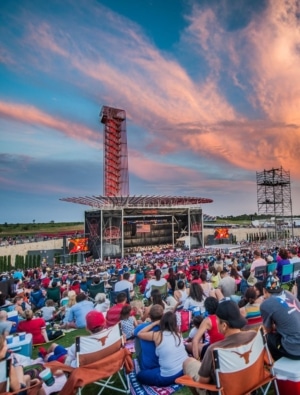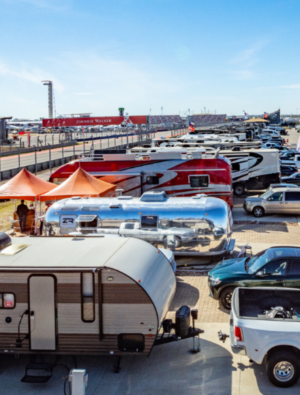We use cookies and similar technologies to help personalize content, tailor and measure ads, and provide a better experience. By clicking accept, you agree to this, as outlined in our Privacy Policy.
Attending the 2023 Red Bull Grand Prix of The Americas and want to decode what the announcers are saying? Don’t worry – we’ve got you. By the time you finish reading, you’ll feel comfortable using motorsports jargon in everyday life.
APEX: This is the point where riders are closest to the inside of a corner. Riders are at the “apex” when they are at the slowest speed, maneuvering safely around turns.
BACKING IT IN: When a rider uses their back brake to slow before a turn and their rear tire slides – sometimes accompanied by a loss of control. You’ll see plenty riders backing it in around Turns 12 to 15!
BEHIND THE BUBBLE: When riders go down straights and tuck behind their windscreen, they’re behind the bubble for the most aerodynamic position.
BOX: A rider will be told to “box” via team radio or dashboard notification when the team wants them to come into pitlane or the garage.
COLD TIRES: Exactly as it sounds, but cold tires offer less grip and often lead to crashes. Warming up your tires properly is an important step to a successful race.
FAIRING: This is the outer body shell of the bike, much like the body of a car. Usually made of carbon fiber, fairing helps differentiate riders as it has the team colors, sponsors, and rider number.
FLAG-TO-FLAG: You’ll hear this when race conditions change – a race starts dry and becomes wet or vice versa. Keep an eye on the pitlane to see riders race in and switch to their second bike, pre-set with the right equipment for the change in conditions.
GRID: This is where riders line up to start the race according to times set in qualifying. At COTA, the grid is between the Main Grandstand and the Paddock, headed towards Turn 1, or Big Red, The Circuit’s iconic hill.
HIGHSIDE: A gnarly crash where the rear wheel loses control for a moment, finds grip again and whips in the opposite direction. That whip can send riders over the handlebars and flying into gravel pits.
KERB: Curb but fancy. It’s that slightly lifted, red and white bit lining the track that helps guide riders around corners.
LEAN ANGLE: When riders lean expertly around turns, the degree to which they lean is called the lean angle. They’ve got padding on their elbows and knees for a reason!
LOWSIDE: Instead of the rear tire finding grip again, like in a highside crash, it continues to slide out from beneath the rider until it can’t be righted, resulting in another high-speed crash.
POLE POSITION: A common term across motorsport racing, pole position is the first spot on the grid, earned through setting the fastest time in qualifying. This can also refer to ending position, also known as “P1” or simply “pole.”
STOPPIE: The opposite of a wheelie. The bike is stopped in such a way that the back wheel comes off the ground, but the rider doesn’t go over the handlebars.
TANK SLAPPER: This is when a rider experiences a big wobble, and their arms and legs slap against the fuel tank.
TRACK LIMITS: If a rider gains an unfair advantage by exiting the track or kerb and hitting the green areas or beyond, officials will penalize them with various punishments to offset the advantage.
TRAIL BRAKING: Anytime a rider brakes into a turn and isn’t upright (i.e., applying lean angle), consider it trail braking.
TUCKED THE FRONT: Unlike a highside or lowside, this crash is caused by the front tire losing grip into a corner. It’s the most common crash, but also one that can be saved by a skillful enough rider.
WHEELIE: The opposite of a stoppie. The front wheel comes off the ground with enough torque and is held there through balance, skill, and a bit of luck.
Continue reading the COTA blog to stay up to date on MotoGP and learn a few more facts to impress. Put your knowledge to the test April 14-16 at the Americas GP.

















